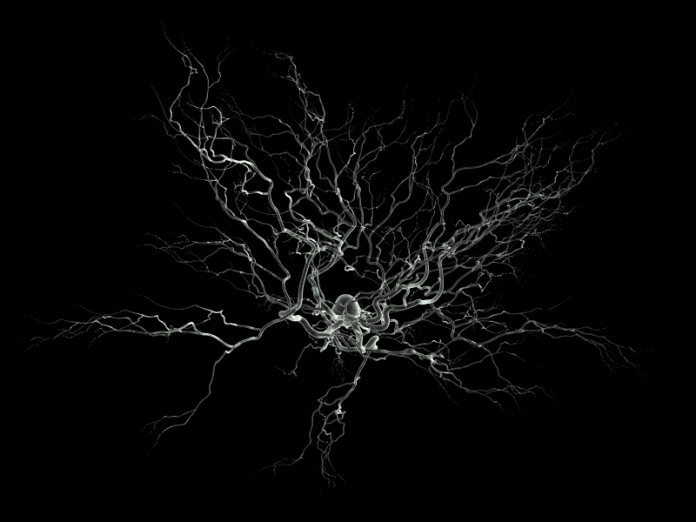Scientists have developed a 3D bioprinting platform that assembles functional انسان neural tissues. The progenitor cells in the printed tissues grow to form neural circuits and make functional connections with other neurons thus mimicking natural مغز tissues. This is a significant progress in neural tissue engineering and in 3D bioprinting technology. Such bioprinted neural tissues can be used in modelling انسان diseases (such as Alzheimer’s, Parkinson’s etc.) caused due to impairment of neural networks. Any investigation of disease of brain requires understanding how the انسان neural networks operate.
چاپ زیستی سه بعدی یک فرآیند افزایشی است که در آن مواد زیستی طبیعی یا مصنوعی مناسب (بیوئینک) با سلول های زنده مخلوط شده و لایه به لایه در ساختارهای سه بعدی بافتی طبیعی چاپ می شود. سلول ها در بیوئینک رشد می کنند و ساختارها به گونه ای توسعه می یابند که بافت یا اندام طبیعی را تقلید کنند. این فناوری کاربردهایی در آن پیدا کرده است احیا کننده medicine for bioprinting of cells, tissues and organs and in research as model to study انسان بدن در شرایط in vitro، بخصوص انسان سیستم عصبی.
مطالعه ی انسان nervous system faces limitations due to unavailability of primary samples. Animal models are helpful but suffer from species-specific differences hence the imperative of در شرایط in vitro مدل های از انسان nervous system to investigate how the انسان neural networks operate towards finding treatments for diseases attributed to impairment of neural networks.
انسانی neural tissues have been 3D printed in the past using stem cells however these lacked neural network formation. The printed tissue had not shown to have formed connections between cells for several reasons. These shortcomings have been overcome now.
در یک مطالعه اخیر، محققان chose fibrin hydrogel (consisting of fibrinogen and thrombin) as the basic bioink and planned to print a layered structure in which progenitor cells could grow and form synapses within and across layers, but they changed the way layers are stacked during printing. Instead of traditional way of stacking layers vertically, they chose to print layers next to another horizontally. Apparently, this made the difference. Their 3D bioprinting platform was found to assemble functional انسان neural tissue. An improvement over other existing platforms, the انسان neural tissue printed by this platform formed neural networks and functional connections with other neurons and glial cells within and between layers. This is the first such case and is a significant step forward in neural tissue engineering. Laboratory synthesis of nerve tissue that mimics brain in function sounds exciting. This progress will certainly help researchers in modelling انسان diseases of brain caused due to impaired neural network to better understand the mechanism for finding a possible treatment.
***
منابع:
- Cadena M.، و همکاران 2020. بیوپینت سه بعدی بافت عصبی. Advanced Healthcare Materials Volume 3, Issue 10 15. DOI: https://doi.org/10.1002/adhm.202001600
- یان ی. و همکاران 2024. 3D bioprinting of انسان neural tissues with functional connectivity. Cell Stem Cell Technology| Volume 31, Issue 2, P260-274.E7, February 01, 2024. DOI: https://doi.org/10.1016/j.stem.2023.12.009
***






































